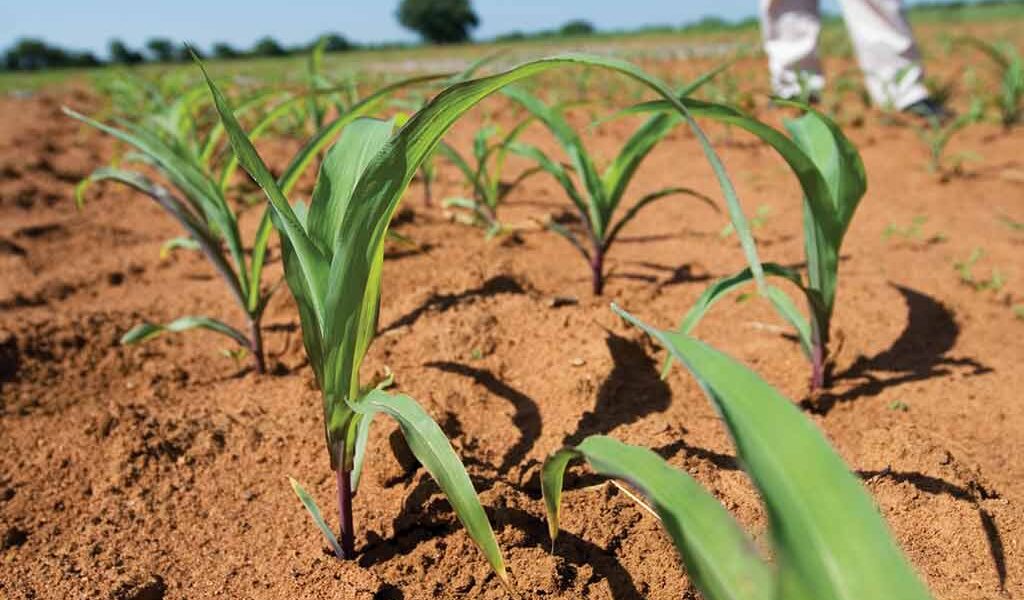Leonie Joubert
Farming communities in semi-desert parts of southern Africa that also depend on the natural environment for wild-harvested food, fodder for their livestock, materials like timber and fuel, and water, will be amongst those most at risk, as rising temperatures across the region bring more heat waves, and longer and more severe droughts.
Tiro Nkemelang, a climate scientist from the Botswana Institute of Technology Research and Innovation (BITRI), says that policymakers in southern Africa need to be aware of how communities and governments should start adapting to these current and future climate change impacts.
Any changes in climate that might impact on rainfall, bring extreme events like heatwaves or droughts, or change fire regimes, can undermine vegetation health and agricultural yields in make it harder for many communities to cope.
“Policymakers also need to be strategic in planning for future water security. They can do this through encouraging rain water capture and water saving measures in preparation for potentially long drought periods that are expected to increase in frequency.”
Semi-desert countries in southern Africa will need to start adapting their agricultural practices now if they are to cope with the hotter, drier conditions that are expected here in response to global temperature increases, as some parts of the region are expected to warm faster than global averages with rising atmospheric carbon dioxide.
Nkemelang, a climate scientist with the Botswana Institute of Technology Research and Innovation (BITRI), singles out the agriculture sector here as being most vulnerable, owing to the fact that so many rural communities are dependent on rain-fed farming methods.
“Farmers here will be hardest hit as heatwaves become more severe, droughts become longer, and the rain seasons less predictable,” says Nkemelang.
In 2017 Nkemelang was working with a team of researchers under the umbrella unit called ASSAR – Adaptation at Scale in Semi-Arid Regions – which is grappling with how the climate is changing in semi-desert parts of southern Africa. The group is also concerned with how communities and governments should respond, so that the region can be ready to absorb the kinds of environmental shocks that will hit drier parts of southern Africa as conditions warm and dry in future.
“Many of the climate models that we’re working with suggest that a country like Botswana is likely to warm up faster than many other parts of the globe,” explains Nkemelang. “In our research, we reviewed some 31 climate models. These suggest that when much of the rest of the globe crosses the 1.5°C temperature increase that the United Nations climate negotiation process has been trying to avoid, Botswana will already have crossed the 2°C threshold. This could happen as soon as 2024 – less than a decade from now.”
Botswana is already a semi-desert country, and because of its relative distance from any oceans or expanses of tropical forest, it won’t benefit from the way these large humid areas slow the global warming effect. Places like the Sahara are also likely to warm faster than the global average, for the same reason.
This accelerated increase in temperature for Botswana and some other parts of southern Africa is likely to result in climate shifts that will hit water-dependent sectors hard.
“The climate models now show that for Botswana, periods of drought are expected to last longer, with fewer rainfall events breaking them,” says Nkemelang, “but when the rain events do come, they are likely to be more intense, possibly resulting in flooding. However, the overall climate trend will be one that is hotter and drier.”
Implementing climate-smart agricultural practices now might help the agriculture sector adapt ahead of this inevitable change, ASSAR researchers say. This includes assisting farmers to install drip irrigation in cultivated lands, use animal traction technology instead of tractors, switch from traditional millet to an early-maturing form of pearl millet, or farm with rice which is not traditional to the region. Adopting livestock breeds that are drought-resilient is another possible approach.
Rural agriculture-dependent communities also lean heavily on the natural environment for wild-harvested food, fodder for their livestock, materials like timber and fuel, and also water. Any changes in climate that might impact on rainfall, bring extreme events like heatwaves or droughts, or change fire regimes, can undermine vegetation health and agricultural yields.
Nkemelang says that policymakers in southern Africa need to be aware of how communities and governments should start moving towards adapting to these current and future climate change impacts.
This article was funded by ASSAR (Adaptation at Scale in Semi-Arid Regions), a research consortium looking at climate change in semi-arid parts of Africa and India.
This editorial is the 2nd insert of a 6 part series written by South African science writer and author Leonie Joubert

